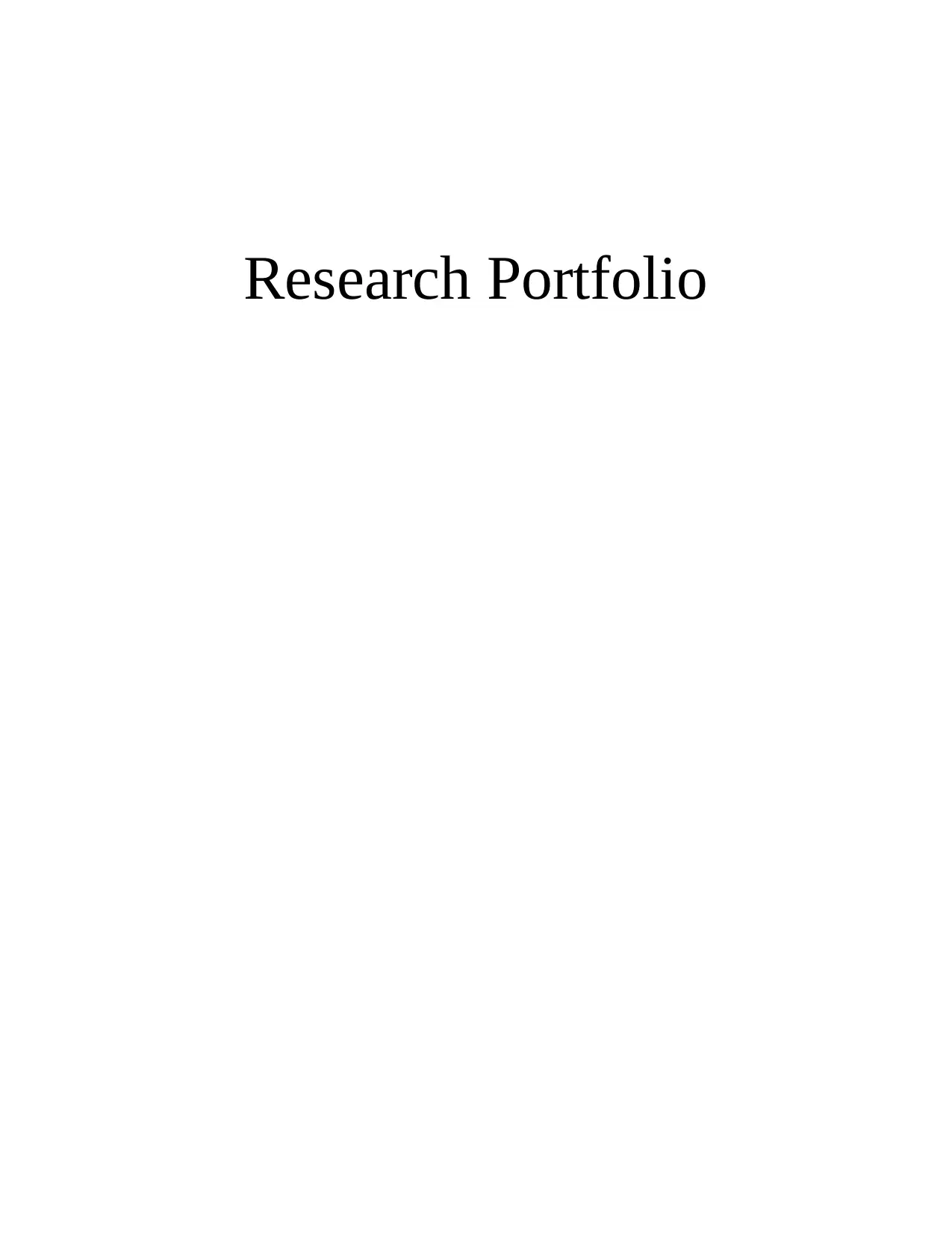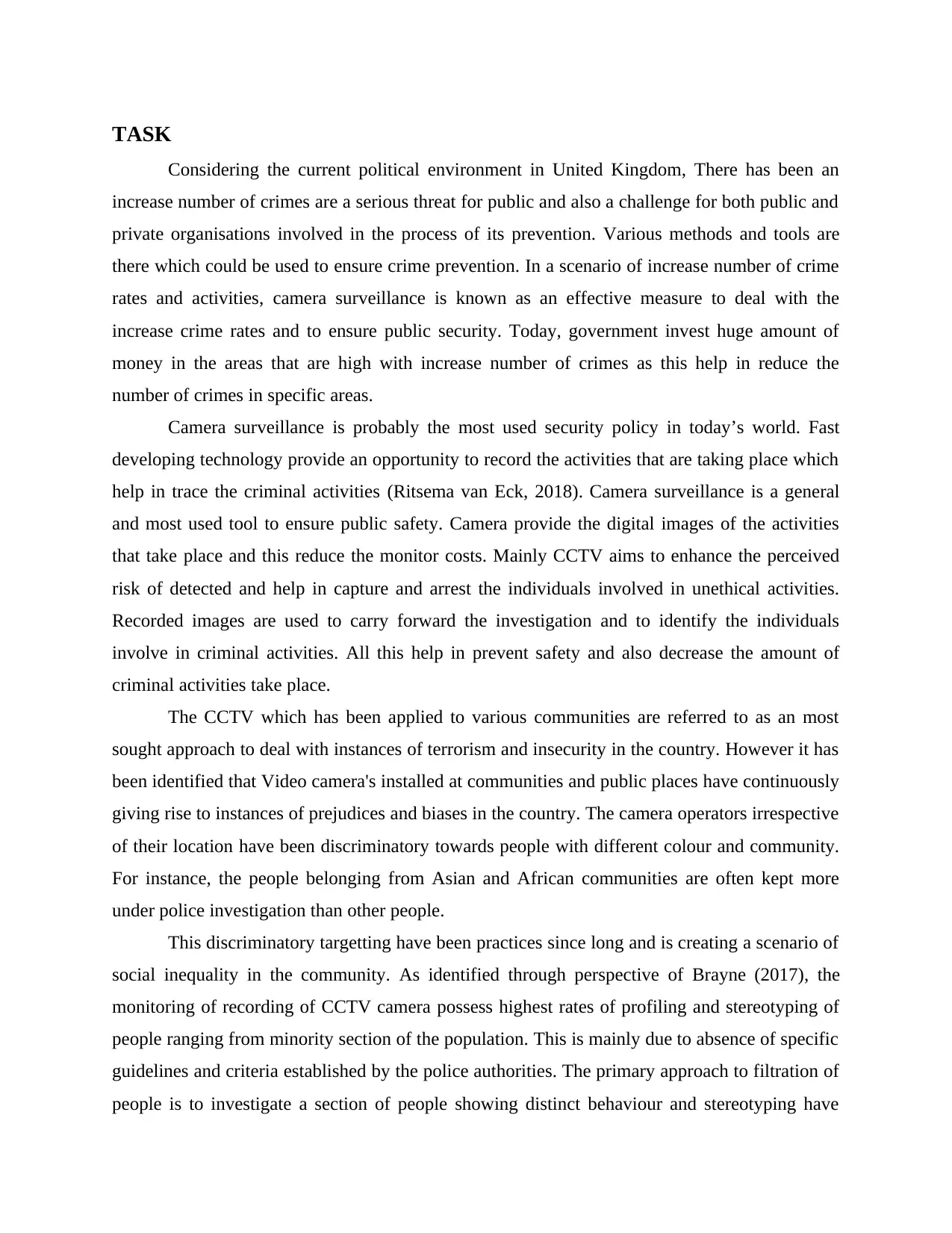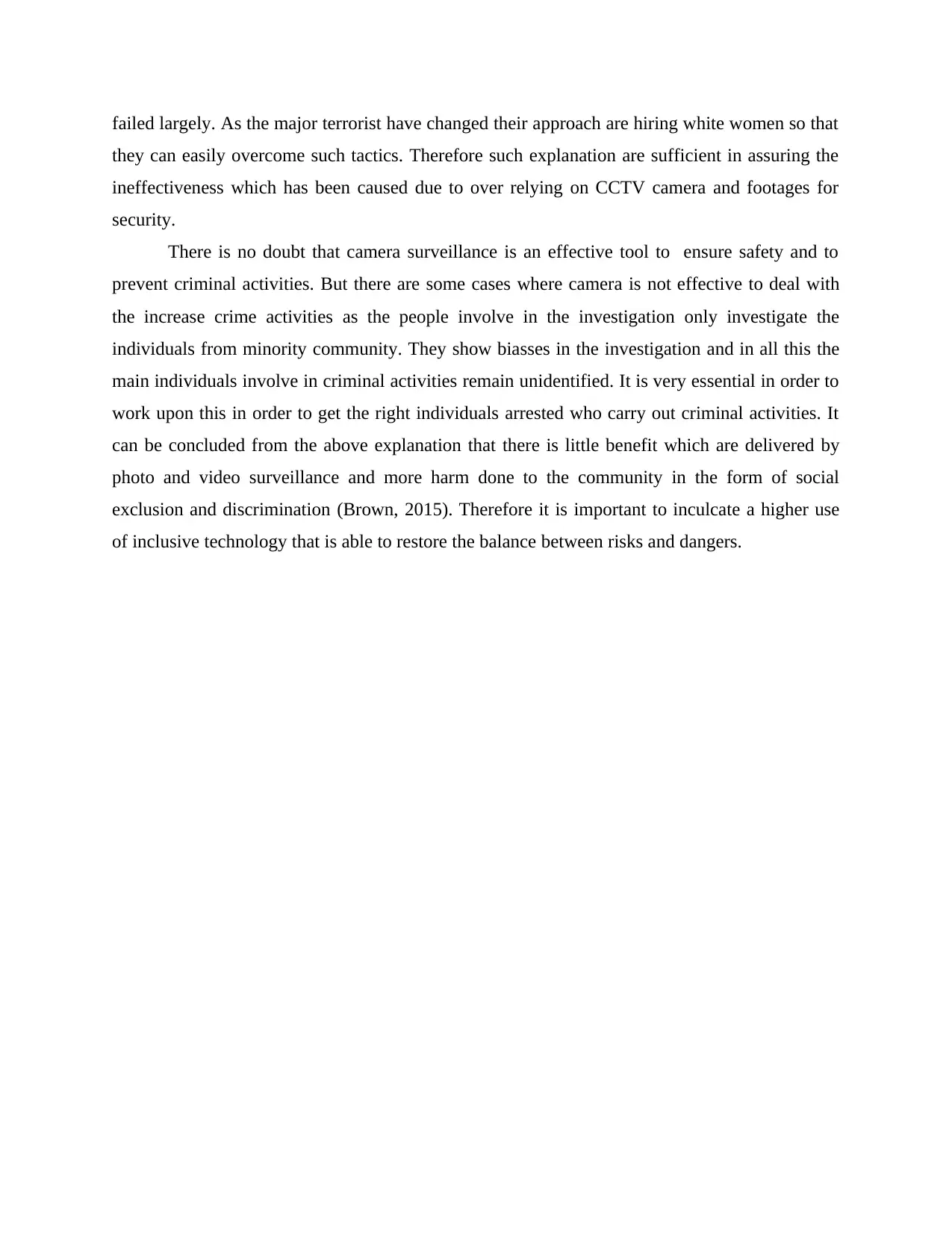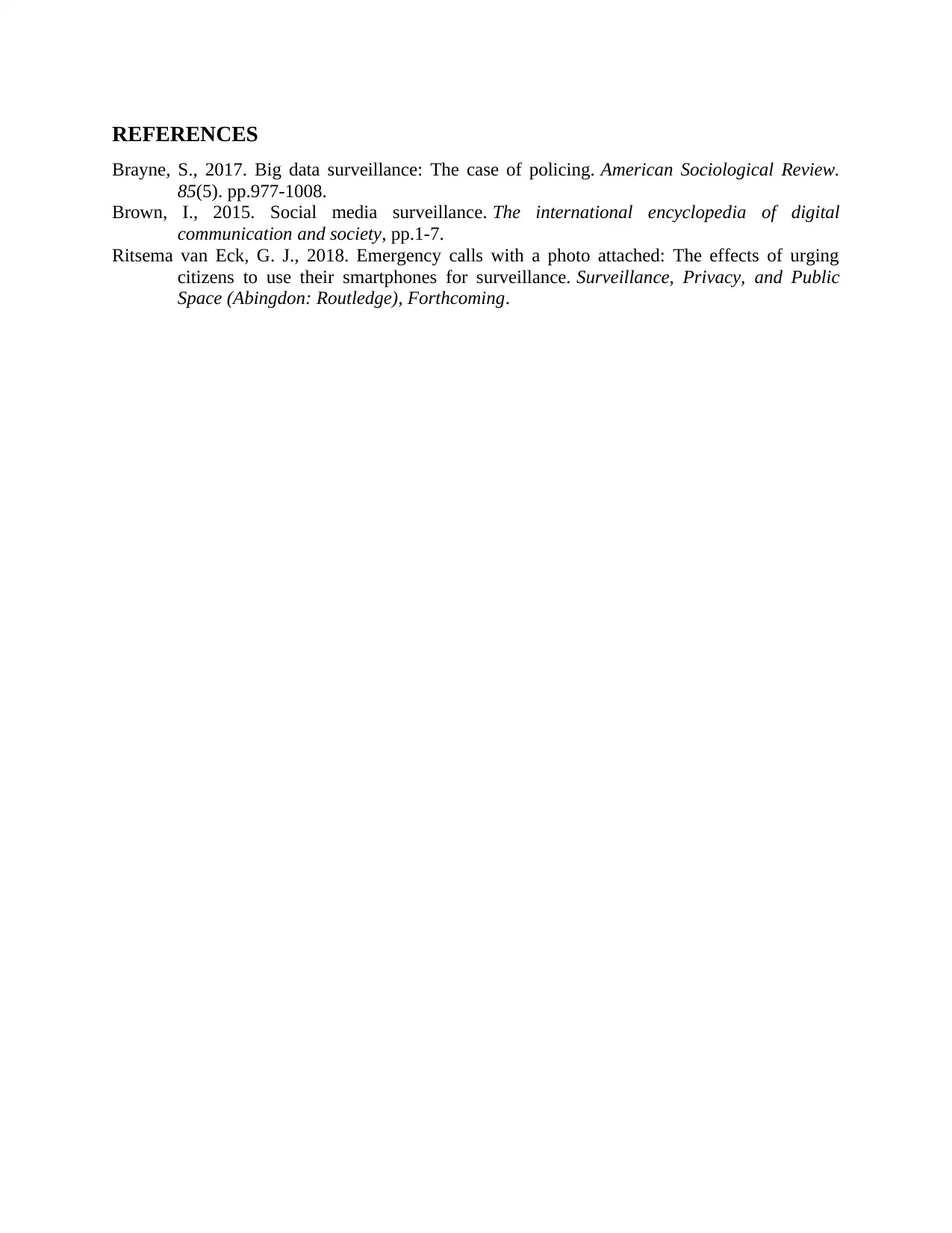Camera Surveillance Effectiveness in UK: A Political Science Report
VerifiedAdded on 2023/01/18
|5
|759
|82
Report
AI Summary
This report delves into the effectiveness of camera surveillance, particularly CCTV, as a crime prevention measure in the United Kingdom. It acknowledges the significant investment in surveillance technologies and their role in reducing crime rates. However, the report also critically examines the potential for biases and prejudices within surveillance practices, particularly concerning the targeting of individuals from minority communities. It draws on research to highlight instances of discriminatory practices by camera operators, leading to social inequality and the profiling of specific groups. The report emphasizes the need for inclusive technologies that can restore the balance between risks and dangers, concluding that while camera surveillance has benefits, it can also contribute to social exclusion and discrimination. The report references key studies to support its analysis and conclusions.
1 out of 5












![[object Object]](/_next/static/media/star-bottom.7253800d.svg)